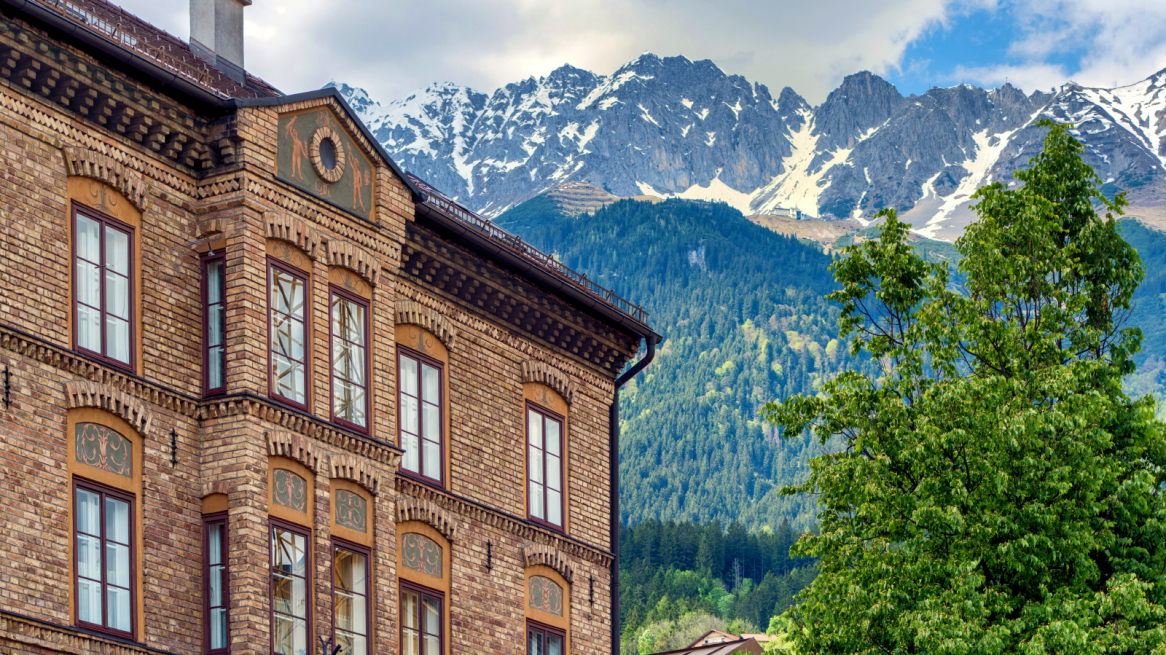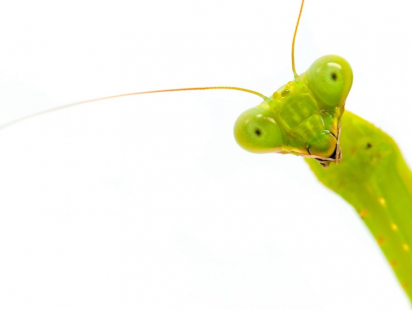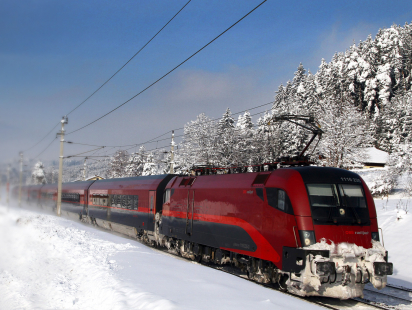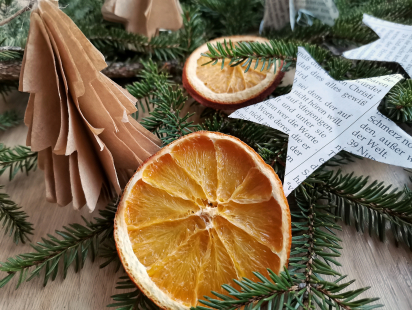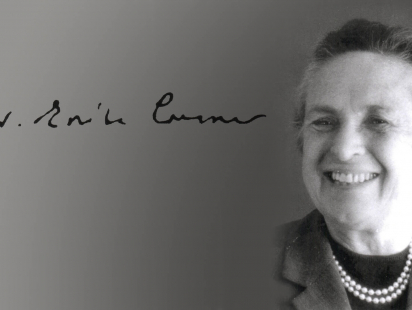Innsbruck is a small city and the area between the high alpine peaks, in the Innsbruck valley basin, is limited. Nevertheless, the districts of our provincial capital are quite different from each other. From the medieval old town, to the classic village image, to ultra-modern architecture, everything is there. Of course, recreational areas and lots of greenery are not to be missed.
I went to the districts for you and thought I would post one characteristic picture per district to show you how multifaceted Innsbruck is. A pretty difficult task as I later realized.
All Saints
Like Amras, Allerheiligen was integrated into Innsbruck in 1938 when Höting was incorporated into the provincial capital. Allerheiligen is part of Hötting, but is also often seen as a district in its own right. It is mainly a residential area and is situated above the airport at the foot of the Nordkette. As a picture I have chosen the view from Galgenbühel. Here you can wonderfully follow the events at the airport and the view goes far over the roofs of the city to the Patscherkofel and Glungezer.

All Saints – Photo by Danijel Jovanovic Photography
Amras
The district of Amras was incorporated into Innsbruck in 1938. An old village centre with numerous farmhouses and the church bear witness to the rather late annexation to the provincial capital. In addition to many residential buildings, you will find the large East Cemetery, the shopping center DEZ as well as the imposing Ambras Castle. The castle describes Amras best for me, it is located directly above the former village and is visible from afar.

Ambras Castle – Photo by Danijel Jovanovic Photography
Arzl
Arzl is my home. And I like to talk about “my” Arzl. It is modern and yet it has a village centre with old farmhouses. At the foot of the Nordkette there is a lot of green space and forest. Traditional village customs can be found here and yet you can be in the city centre in a few minutes. Arzl is part of the so-called MARTHA villages (Mühlau-Arzl-Thaur-Rum-Absam) and has been part of the city area since 1940. The all towering Calvary is certainly the most striking impression of this area. That is why I chose the small, wonderful chapel on the Kalvarienberg for my characteristic photo of Arzl.

The Calvary in Arzl – Photo by Danijel Jovanovic Photography
Hötting
Next to Wilten, Hötting is the area with the earliest traces of settlement in the area of today’s Innsbruck. Hötting is situated at the foot of the Nordkette and practically entirely on a slope. Hötting fascinates with old farmhouses, a lot of cultural tradition (clubs, inns, etc.), as well as wonderful views of Innsbruck’s city centre. For me, Hötting is above all the view of the old town and the tower of the old church.

The old gothic church of Hötting – Photo by Danijel Jovanovic Photography
Höttinger Au
When I think of the Höttinger Au, I mainly think of kilometres of riverside promenades along the Inn and lots of greenery. The district is mainly residential, so here is a photo of the banks of the Inn with the Nordkette.

The Inn promenade in the Höttinger Au – recreation in the middle of the city – Photo: Danijel Jovanovic Photography
Hungerburg
The Hungerburg area is also known as Hoch-Innsbruck. Characteristic are villas, the Hungerburg and Nordkettenbahn and above all the breathtaking views high above the provincial capital.
Igls
Igls is located at the foot of Innsbruck’s local mountain Patscherkofel. For me, the two are inseparable and that’s why my choice here is the aerial tramway, which has been transporting locals and guests alike up the history-steeped local mountain for many decades. When you take a ride on the old cable car over the slopes and ice channel, you can feel the flair of the two Winter Olympics in 1964 and 1976 pretty well. The aerial tramway is still running this summer and will be replaced by a new cable car next winter. A must for nostalgics, one last ride.

Only this summer – the old aerial tramway in Igls – Photo: Danijel Jovanovic Photography
Kranebitten
Kranebitten is located a bit away from the city in the west. Here you will find mainly recreational areas on the banks of the Inn River. Sunsets are especially beautiful here and you can watch the planes taking off and landing at the airport.

Local recreation at the Inn, extensive river banks – Photo: Danijel Jovanovic Photography
Mariahilf
Mariahilf is probably the most photographed motif in Innsbruck next to the Golden Roof. The colorful row of houses along the Inn makes it into every travel photo book. Therefore, no doubt, this motif is also my Mariahilf motif.

Classic at sunset – Photo: Danijel Jovanovic Photography
Mühlau
Together with Arzl, Mühlau is one of the so-called Martha villages, which belong to the city of Innsbruck. For me Mühlau is mainly a recreation area, starting point for hikes and bike tours to the Nordkette and the very appreciated Innsbruck drinking water, which supplies the city here from the Mühlauer Stollen, with the best quality. Mühlau still has a very village-like character. The beautiful parish church characterizes the district.

Beautiful Mühlau at the foot of the Nordkette – Photo: Danijel Jovanovic Photography
Olympic Village
The Olympic Village is characterized by many high-rise buildings. In the course of the two Olympic Games, 1964 and 1976, two Olympic Villages were built here. Today you can’t distinguish them anymore. In one park, the Olympic rings and dates are depicted on a stone and remind us of the former use of this area.

1964 and 1976 – two years that distinguish Innsbruck as a sports city – Photo: Danijel Jovanovic Photography
Pradl
If you were to ask me where Pradl is, my answer would probably be like that of many Innsbruckers: from the train station to the Südring, from the Sill to the Inn. That’s about how you could describe it. In general, these questions about district boundaries come up often and are often a source of conversation between locals. When I think of Pradl, I mainly think of the Rapoldipark, the big church, old houses and the Tivoli swimming pool as well as the Tivoli stadium. I chose the Pradl parish church, for me it is the symbol of this part of town.

Pradler Parish Church near Rapoldipark – Photo: Danijel Jovanovic Photography
Reichenau
Reichenau is mainly a residential area, partly characterized by high-rise buildings. The district lies at the confluence of the Sill and Inn rivers and offers a wonderful recreational area.

Confluence of Sill and Inn in Reichenau – Photo by Danijel Jovanovic Photography
Rossau
The Rossau is located on the southern bank of the Inn between Amras and the Olympic Village. It is mainly an industrial and commercial area, but offers a very nice green oasis with the quarry pond.

The quarry pond in Rossau – Photo by Danijel Jovanovic Photography
Saggen
One of the most beautiful districts of Innsbruck is Saggen. Thanks to the many beautiful houses, many also speak of Innsbruck’s villa district. The viaduct arches of the railway to the main station in the city centre are also characteristic of this part of town. In the Claudiastraße you can find colorful houses, villas and the breathtaking view to the Serles – my photo for Saggen.

Claudiastraße with view to the Serles and the viaduct arches – Photo by Danijel Jovanovic Photography
Saint Nicholas
Sankt Nikolaus is located on the northern bank of the Inn River and below Hötting. The so-called “Koatlackn” is known far beyond Innsbruck, some people equate this word in general with Innsbruck residents. The “Koatlackler” are mainly found in the Innstraße. The colorful houses of the street continue the image of Mariahilf on the other side of the Innsbrücke. Therefore, this street symbolizes Saint Nicholas for me.

Innstraße in Sankt Nikolaus with numerous shops and cafés – Photo by Danijel Jovanovic Photography
Wilten
Wilten stretches from the Bergiselschanze to the Triumphpforte and from the Inn to the main train station. Old, colorful, connected houses with great courtyards make up the streets. Andreas-Hofer-Strasse is a very special street, which is why I chose it for the Wilten photo. Colorful architecture, the view to the Nordkette, tram tracks and many, partly alternative shops make this street special.

Andreas-Hofer-Straße – colourful in every way – Photo: Danijel Jovanovic Photography
The city centre
For me, the city centre is three things: the Old Town, Maria-Theresien-Strasse and Museumstrasse. Innsbruck’s pedestrian zone around the Annasäule with a view to the Nordkette is simply special, the Goldenes Dachl and the old town a feast for the eyes. Therefore, there are exceptionally two photos here.

The city center – Maria-Theresien-Straße with Nordkette – Photo: Danijel Jovanovic Photography

Alstadtbrunnen with view to the Goldenes Dachl – Photo: Danijel Jovanovic Photography
A little ramble through Innsbruck’s districts is now over. The provincial capital is so diverse and exciting. Every single district would offer so many photo motifs that it would go beyond the scope of this article. The best thing is to go exploring yourself. I wish you a lot of fun and can highly recommend the Innsbruck Card.
Rate this article
Show me the location on the map
Professional photographer from Innsbruck, nature enthusiast and animal lover.
Similar articles
The zoo is at the cradle of my love for Tyrol. It awakened in me the longing…
I commute a lot between Innsbruck and Vienna and I know the advantages of both cities. Many…
The darker and colder it gets outside, the cozier and cozier it gets inside. When, if not…
The physical chemist Erika Cremer (1900-1996) is one of the most important research personalities of the University…

